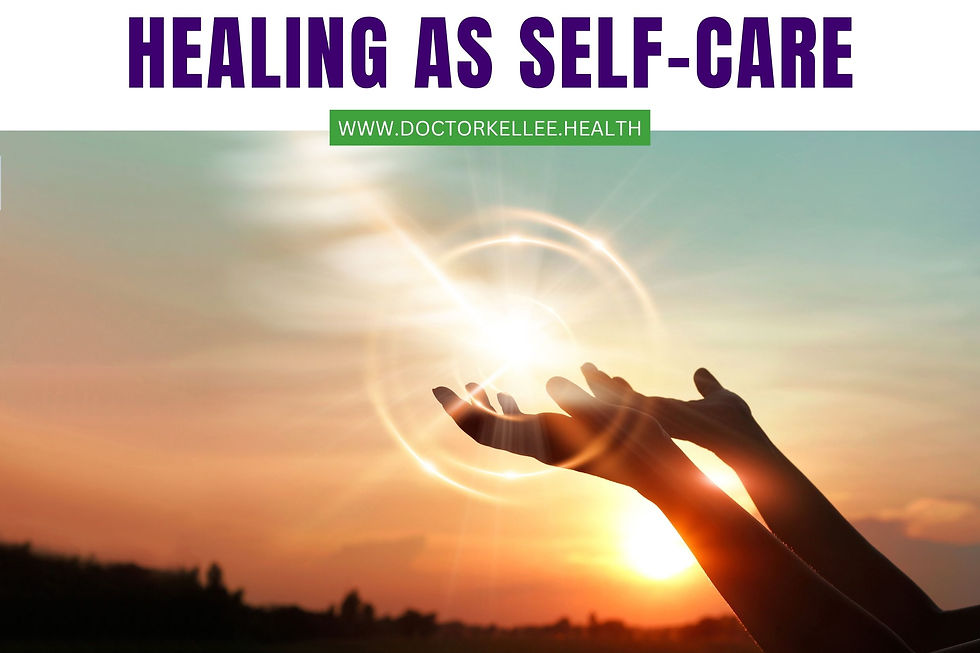Healing as Self-Care
- Doctor Kellee
- Apr 20, 2024
- 2 min read

Life is often unpredictable, and one event can alter our path and change us forever. Many people are born into unhealthy circumstances. Others face trauma later in life. No matter the timing, we all face traumatic events during our lifetime. These events may be out of our control, the direct result of choices we have made, or we may be collateral damage from the misdeeds of others. No matter the mechanism, the result is the same. Damage has been done, and it manifests in a variety of ways as we develop. We process trauma differently, and our ability to heal is a direct reflection of the support and resources within our environment. Let’s be clear, the outcomes of trauma are not created equal. The effect of traumatic events has much to do with the individual to whom it is happening. We are the total of our experiences, and for some, trauma is a rare occurrence. For others, it is a daily occurrence.
In any case, I fiercely believe we cannot heal what we will not confront. Human beings have an inane ability to compartmentalize and sweep our emotions under the proverbial rug. At first glance, it is easier to deny our feelings than to face them head-on. This action allows our wounds to fester and cause deep-seated issues that eventually resurface. Instead of “kicking the can down the road” and avoiding our pain, we need healthy coping mechanisms that allow us to acknowledge and heal our pain. Healing is vital to ending the cycle of trauma.
The first step to healing is acknowledgment. Speak your truth to those trusted individuals within your village. Surround yourself with those who affirm you and your worth. Find those people who will believe and support you. Seek the counsel of those trained in trauma therapy and let the work begin.
The second step is forgiveness. First and foremost, forgive yourself (if appropriate) for your role in perpetuating or allowing your circumstance. Then forgive the person(s) (if appropriate) who wronged you or inflicted pain. Forgiveness has little to do with the other person. It opens the door to your healing and serves as your affirmation to the world that you are no longer saddled with anger or guilt. You are NOT what happened to you!
The last step is to move forward. The process of healing dictates that we move forward. Healing is a journey and there is no straight path. Once you have committed to leaving pain and negative emotions behind, you are free to live. Carrying the baggage of trauma is laborious work. One of the most gratifying ways to heal your past is to help someone else on their journey to wholeness. Allow them to benefit from your experience and begin the work of healing.
Pain and suffering are an unavoidable part of life. We can’t always control our circumstances, but we can choose our response. Acknowledge. Forgive. Move Forward. Today, choose to heal!
Here’s to your health!



Comments